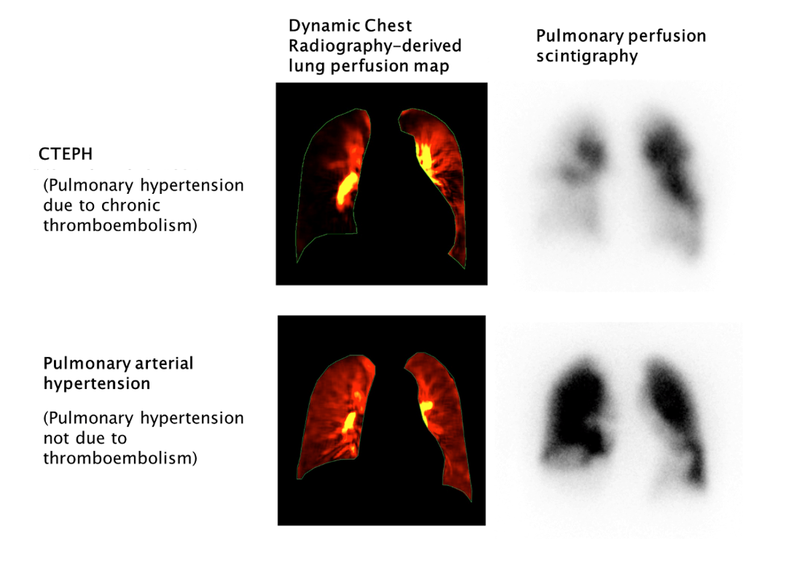Dr Yamasaki Receives RSNA Cum Laude Award for Dynamic Digital Radiography Education Exhibit
 Konica Minolta announced that Yuzo Yamasaki, MD, PhD, from the Department of Clinical Radiology at Kyushu University (Fukuoka, Japan) has received the Cum Laude award for his education exhibit on the use of Dynamic Digital Radiography (DDR) for pulmonary vascular diseases at the 108th Scientific Assembly and Annual Meeting of the Radiological Society of North America (RSNA). DDR is Konica Minolta’s innovative radiographic technology that enables clinicians to observe anatomy in motion and is currently available on four of the company’s X-ray systems. Dr Yamasaki’s education exhibit, “Dynamic Chest Radiography for Pulmonary Vascular Diseases: Clinical Applications and Correlation with Other Imaging Modalities,” was one of 43 Cum Laude awards given to the 1,454 education exhibits presented at RSNA 2022, and one of only five X-ray-focused presentations to receive an award this year.
Konica Minolta announced that Yuzo Yamasaki, MD, PhD, from the Department of Clinical Radiology at Kyushu University (Fukuoka, Japan) has received the Cum Laude award for his education exhibit on the use of Dynamic Digital Radiography (DDR) for pulmonary vascular diseases at the 108th Scientific Assembly and Annual Meeting of the Radiological Society of North America (RSNA). DDR is Konica Minolta’s innovative radiographic technology that enables clinicians to observe anatomy in motion and is currently available on four of the company’s X-ray systems. Dr Yamasaki’s education exhibit, “Dynamic Chest Radiography for Pulmonary Vascular Diseases: Clinical Applications and Correlation with Other Imaging Modalities,” was one of 43 Cum Laude awards given to the 1,454 education exhibits presented at RSNA 2022, and one of only five X-ray-focused presentations to receive an award this year.
DDR is an evolution in radiographic technology that provides a series of individual digital X-ray images acquired at high speed and low radiation dose. These images provide a diagnostic-quality view of anatomical structures in motion and the ability to visualize the dynamic interaction with physiological changes over time, enhancing diagnostic capabilities and providing clinicians with a way to visualize anatomy like never before. DDR provides enriched radiographic information and enhanced diagnostic capabilities such as the ability to visualize pulmonary hemodynamics without contrast media, which is the subject of Dr Yamasaki’s research.
Dr Yamasaki’s education exhibit was based on his recently published article in the journal, Radiology, that found DDR of the chest (aka Dynamic Chest Radiography (DCR)) delivers similar efficacy as lung ventilation perfusion (V/Q) for the detection of chronic thromboembolic pulmonary hypertension (CTEPH). An accompanying editorial in the same issue noted that the DDR/DCR technique is performed with significantly lower patient radiation dose – one-tenth of lung V/Q scintigraphy, one-twentieth of standard CT pulmonary angiography, and one-fifth of low-dose CT pulmonary angiography – and without the need for contrast media.
Dr Yamasaki’s education exhibit discussed the advantages of DCR (aka DDR) compared to other imaging modalities for lung perfusion and ventilation assessment. As noted in his exhibit, the advantages of DCR/DDR compared to other modalities is that digital X-ray is readily available as a diagnostic imaging technique, it is cost effective with a low radiation exposure, and it does not require any contrast media or radionuclides unlike CT and nuclear medicine. In addition to lung perfusion and ventilation assessment, Dr. Yamasaki’s exhibit also covered other applications for DCR/DDR, including pulmonary arterial and pulmonary venous disease evaluations.
“Konica Minolta congratulates Dr Yamasaki for his excellent work and educational exhibit on the use of DDR for evaluating pulmonary diseases. To receive the Cum Laude award from the RSNA is a significant achievement and we appreciate the association recognizing his use of this novel technology to diagnose and manage pulmonary vascular diseases,” says Kirsten Doerfert, Senior VP of Marketing, Konica Minolta Healthcare.
Related Articles
Citation
Dr Yamasaki Receives RSNA Cum Laude Award for Dynamic Digital Radiography Education Exhibit. Appl Radiol.
December 22, 2022